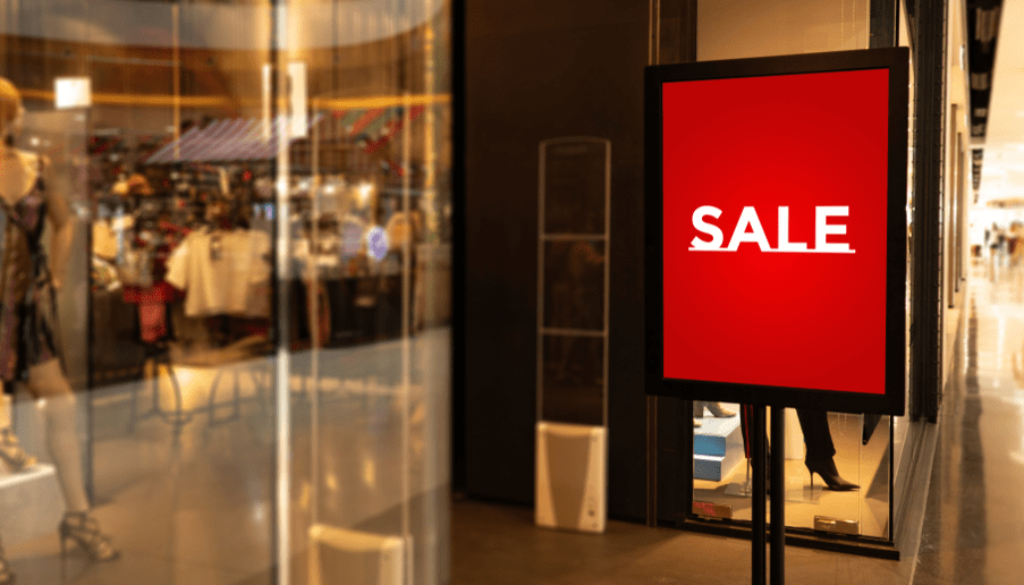More Than Half of Retail Businesses are Using Inflation to Price Gouge
[ad_1]
More Than Half of Retail Businesses are Using Inflation to Price Gouge
As the economy recovers from the COVID-19 pandemic, inflation has surged in recent months affecting both retailers and consumers.
In November, Digital.com surveyed 1,000 retail owners and executives to discover how inflation is impacting profitability, pricing, and discount offers this shopping season.
list of our “best of” video reviews
Our findings revealed that more than half of retail businesses are using inflation to drive prices higher than is necessary to offset increased costs.
Key Findings
-56% of retail businesses say inflation has given them the ability to raise prices beyond what’s required to offset higher costs
-Over half of retailers have increased prices by 20% or more on average
-52% of businesses are offering fewer or no discounts this holiday season
-Shrinking discounts and increasing price of complementary products are the most popular ways businesses are driving up prices
56% of retail businesses have increased profits beyond inflation to boost profitability
When asked how recent inflation has impacted profitability, 56% of retail businesses responded that inflation gave them the ability to raise prices beyond offsetting costs.
Large enterprises (LEs) were more likely than small and medium-sized businesses (SMBs) and small and medium-sized enterprises (SMEs) to say they were using inflation to more than offset costs at a rate of 63% compared to 52% of SMBs and 55% of SMEs.
“What’s interesting about our findings is that more than half of respondents say that while they used inflation as a reason for price increases, they expect higher profits as a result,” says Digital.com’s small business expert, Dennis Consorte.
“In other words, businesses are inflating already inflated prices in order to turn a bigger profit amid people’s fears over uncertain times.”
Automobile, e-commerce, and electronics industries most likely to hike prices
Our survey revealed that the automobile, e-commerce, and electronics and appliances industries were most likely to be capitalizing on inflation.
Of the businesses we surveyed who belonged to the automobile industry, 72% indicated they raised prices to more than offset costs. Sixty-five percent of e-commerce and 62% of electronics and appliances businesses also admitted to price gouging.
Over half of retailers have increased prices by 20% or more
Eighty-five percent of businesses have increased prices, and 55% of retailers have increased prices by 20% or more on average.
Of those who have increased prices, 28% of large enterprises increased prices 50% or more, compared to 6% of SMEs and 12% of SMBs.
When asked why they have increased prices, 66% of businesses cited rising inflation, 69% supply chain issues, and 57% increased demand.
52% of businesses are offering fewer or zero discounts this holiday season
This holiday season, 38% of businesses will offer fewer discounts than last year, and 14% will not offer any at all.
Smaller businesses are offering fewer discounts this holiday season compared to larger enterprises. Fifty-seven percent of SMBs and 56% of SMEs say they plan to offer fewer or no discounts, compared to 36% of LEs.
It comes as no surprise to Consorte that many small businesses are offering fewer discounts this year.
“Many small businesses are still recovering from lockdowns and other COVID mandates. With the Omicron variant upon us and inflation at a 30-year high, decision-makers feel uncertain about future revenue. For them, fewer discounts could be seen to keep the doors open through the holiday season.”
Clothing and accessories (74%), electronics and appliances (66%), and furniture and home furnishings (57%) are the industries that are most likely to be offering fewer discounts this holiday season.
Businesses are increasing the price of complementary products, shrinking discounts
Among businesses that have increased prices, 55% shrank discounts, and 48% increased the price of complementary products.
Furniture and home furnishings (51%), health and personal care (50%), clothing and accessories (50%), and electronics and appliances (45%) are the industries that are most likely to have shrunk discounts.

The industries most likely to have raised the price of complementary products include automobile (61%), building material, gardening equipment, and supplies (46%), electronics and appliances (45%), and health and personal care (43%).
Businesses are also using pricing tactics such as shrinkflation, increased surcharges, and bundling to drive up prices.
“We’re still in a period of fear and uncertainty about the economy and legislative responses to COVID-19. We can expect unusual pricing tactics for as long as this continues. Some merchants will continue to raise prices out of fear, while others will take advantage of their customers’ fears to realize higher profit margins. When the Zeitgeist of our time returns to baseline, so too will merchants in their pricing methodologies,” says Consorte.
Methodology
All data found within this report was derived from a survey commissioned by Digital.com and conducted online by survey platform Pollfish. In total, 1,000 U.S. retail business owners and executives were surveyed. Appropriate respondents were found via a screening question. To qualify for the survey, each respondent had to own a retail business or be an employed executive at a retail business. This survey was conducted on November 18, 2021. All respondents were asked to answer all questions truthfully and to the best of their abilities. For full survey results, please email julia@digital.com.
This article originally appeared here.
[ad_2]
Source link
Discover more from My Business Web Space
Subscribe to get the latest posts sent to your email.





You must be logged in to post a comment.